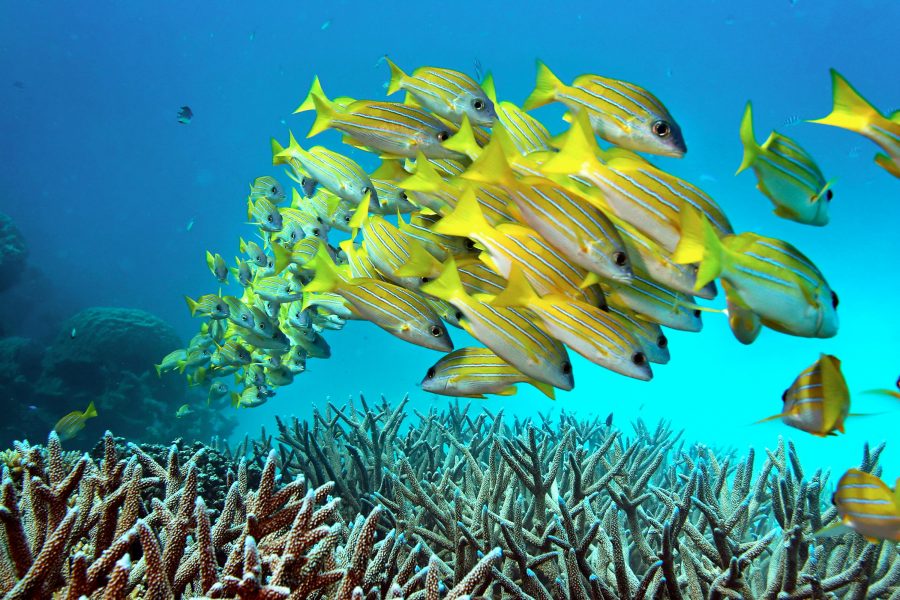Earth Day can be every day
A school of fish hovers over staghorn coral on the Great Barrier Reef in Australia. Columnist Tyler Panlilio says climate change is responsible for the decline of the reef, and encourages students to be aware of climate change.
Apr 23, 2017

The Great Barrier Reef is dying, and climate change is to blame.
The corals that make up the reef are the subject of many recent studies regarding the collapse of one of the seven natural wonders of the world.
Coral bleaching is a direct result of climate change. Warmer water temperatures cause corals to release the algae responsible for providing pigmentation and energy to the invertebrates. If the bleaching is severe, the possibility of recovery is extremely low. But even if recovery is possible, it could take several decades for coral to completely recover.
Nature journal published a study last month which found that “in 2016, only 8.9 percent of 1,156 surveyed reefs escaped with no bleaching, compared to 42.4 percent of 631 reefs in 2002.”
Get The Daily Illini in your inbox!
Although there are efforts being made to prevent and mitigate further damage, it might be too late to save the Great Barrier Reef. Last year marked the fourth instance of mass coral bleaching within the last 20 years. Going by that trend, there’s no reason why another mass bleaching will occur in the near future.
I remember learning about the Great Barrier Reef in the first grade and watching “Finding Nemo” at my aunt’s apartment a week later. Reading factoids about the world’s largest living structure and seeing the vibrant color of the reef in pictures had my 6-year-old self in awe.
It’s unsettling to think that future generations will learn about this ecosystem only to find out that it is on the verge of death or already gone. What our teachers taught us in science and geography class will still be taught to our kids — there’s little doubt in that. But the only difference is that some of these topics will be in history class instead.
Climate change is real, and it’s happening at a much more alarming rate than anyone had expected. The destruction of the Great Barrier Reef is only one example of the loss of biodiversity on this planet. Coupled with melting of the Arctic Circle and the deforestation of the Amazon rainforest, it’s difficult to argue that the only ones to blame aren’t ourselves.
In truth, there are limited options we can do as students to make a significant impact in the long run. Even if 10,000 people collectively reduce their carbon footprint by half in their lifetimes, it amounts to one less drop in the bucket. And it’s extremely frustrating knowing that.
But it doesn’t mean we can’t try.
Students on campus should at least be aware of what they consume and how they could reduce it. Alternatives can be as small as choosing to walk, bike or even take public transportation when traveling instead of using a car. Reducing energy usage when indoors — even if it means being a bit cold in the winter and hot in the summer — can help too. Maybe spend a Sunday afternoon planting a tree somewhere.
Earth Day has passed, but who says that we can’t celebrate it every day? We shouldn’t spend only one day of the year reducing our carbon footprint; instead, it can be an active effort, something that we do day-to-day not only for ourselves, but for future generations as well.
Earth is all we’ve ever had. We should at least try to reduce the damage we do to it.
Tyler is a freshman in Media.






